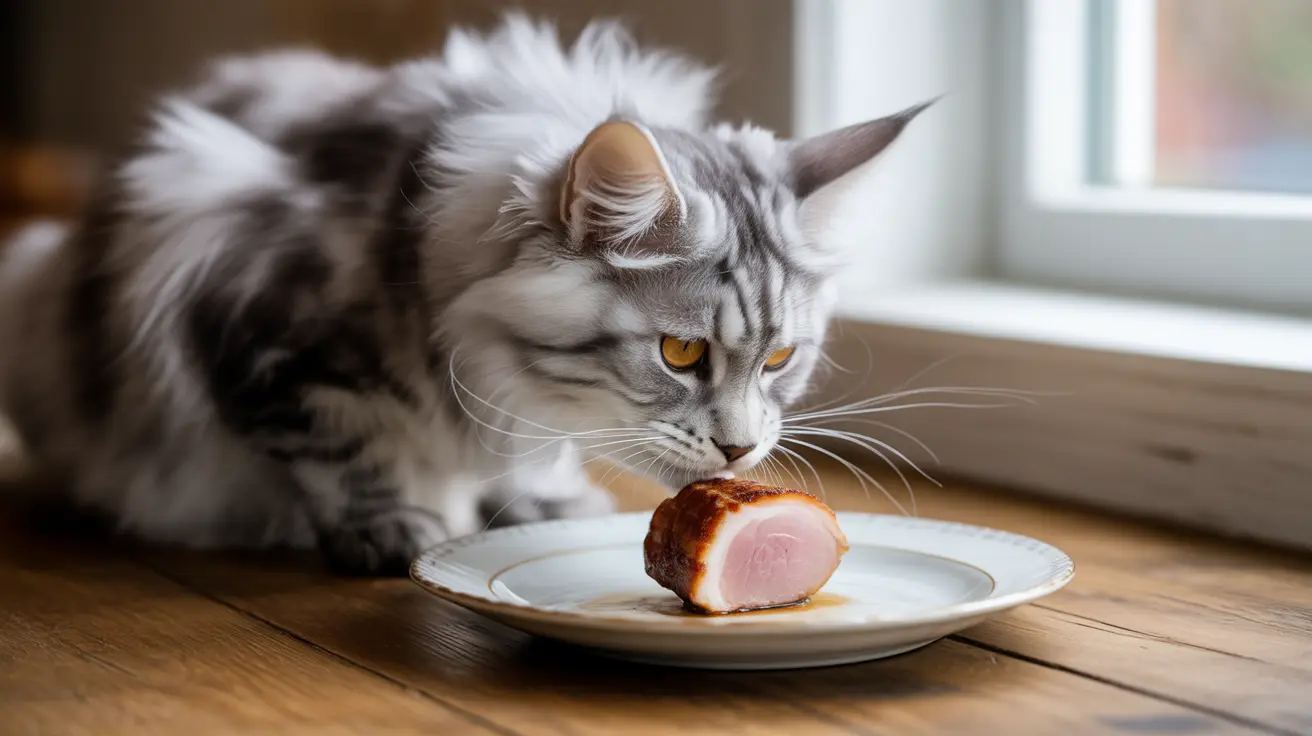The Nutritional Benefits of Pork for Cats
Pork can offer several nutritional advantages for cats when served properly. It's rich in high-quality protein, containing essential amino acids that cats need for muscle maintenance and overall health. Additionally, pork provides important nutrients such as:
- Taurine, vital for heart health and vision
- B-vitamins for metabolism and energy
- Iron for healthy blood cells
- Zinc for immune system support
- Phosphorus for bone health
Safe Preparation Guidelines
When preparing pork for your cat, following proper safety protocols is essential:
Cooking Requirements
- Cook thoroughly to an internal temperature of 145°F (63°C)
- Avoid seasonings, spices, or marinades
- Remove all bones and excess fat
- Cut into small, manageable pieces
Serving Recommendations
- Offer plain, lean cuts only
- Start with small portions to test tolerance
- Limit treats to 10-20% of daily caloric intake
- Serve at room temperature
Potential Risks and Concerns
While cats can eat pork, several risks should be considered:
Health Risks
- High fat content can lead to obesity and pancreatitis
- Raw pork may contain harmful parasites and bacteria
- Bones can cause choking or internal injuries
- Processed pork products contain dangerous levels of sodium
Signs of Adverse Reactions
- Vomiting or diarrhea
- Lethargy
- Loss of appetite
- Digestive discomfort
Types of Pork to Avoid
Never feed your cat these pork products:
- Raw or undercooked pork
- Bacon, ham, or sausages
- Processed deli meats
- Seasoned or marinated pork
- Pork rinds or crackling
Frequently Asked Questions
Can cats safely eat pork, and what preparation is required before feeding it to them?
Yes, cats can safely eat pork when it's properly prepared. The pork should be thoroughly cooked, free from seasonings, and cut into small pieces. Remove all bones and excess fat before serving.
What health risks should I be aware of when giving my cat pork treats?
The main risks include obesity from high fat content, potential parasites in undercooked meat, choking hazards from bones, and sodium toxicity from processed pork products. Monitor your cat for any adverse reactions.
Why is raw or processed pork unsafe for cats, and which pork products should be avoided?
Raw pork can contain harmful parasites and bacteria, while processed pork products have excessive sodium and preservatives. Avoid raw pork, bacon, ham, sausages, and any seasoned or processed pork products.
How can pork benefit my cat nutritionally compared to other meats like chicken or fish?
Pork provides protein, taurine, B-vitamins, and minerals. However, chicken and fish are generally leaner options with similar nutritional benefits and are more commonly used in commercial cat foods.
How often and in what quantities is it safe to feed my cat pork to avoid health issues?
Pork should only be given as an occasional treat, not exceeding 10-20% of your cat's daily caloric intake. Start with small amounts and monitor for any digestive issues.
Conclusion
While cats can eat pork, it should be treated as an occasional treat rather than a dietary staple. Always prioritize proper preparation, stick to lean cuts, and monitor your cat's reaction when introducing pork to their diet. When in doubt, consult with your veterinarian about incorporating pork into your cat's treat rotation.






